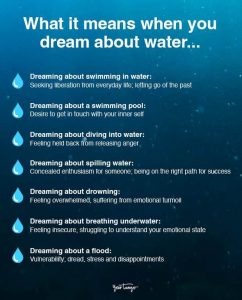Unlocking Efficiency and Safety with Mobile Crane Hire in Australia

Australia is a country that thrives on big projects. Rail lines stretching across deserts, skyscrapers pushing higher into city skylines, new wind farms turning in coastal winds. Behind so many of these achievements sits a machine people barely notice: the mobile crane.
They’re not just useful—they’re indispensable. The reason is simple. Fixed cranes are powerful but static. Mobile cranes can move, set up quickly, and adapt when plans shift. On a rail upgrade in regional Victoria, cranes were used to install prefabricated bridge spans overnight, so trains could run again the very next morning. That’s the kind of efficiency that makes mobile crane hire in Australia more than just convenient—it’s critical.
Why Mobile Cranes Are More Than Just Machines
It’s easy to reduce a crane to its size and strength. But on a worksite, a crane shapes the whole rhythm of construction. A lift delayed by even half a day can set off a chain reaction of missed tasks. A lift done on time? Entire crews can get moving faster.
The machines are also incredibly varied. Some can roll straight into the CBD, weaving through traffic before hoisting steel beams into place. Others are designed for the Kimberley, crawling over rock and dirt with stability that tower cranes could never achieve. Matching the right crane to the site is what saves money—not cutting corners, but using precision.
Technology adds another layer. Load sensors, computer-assisted stability systems, fuel-efficient engines. These aren’t gimmicks. They’re the difference between a risky operation and one that finishes safely. Especially in Australia, where winds on coastal projects can shift suddenly, those systems are not luxuries—they’re survival tools.
Why Hiring Beats Owning for Most Businesses
Buying a crane sounds tempting until you see the numbers. Purchase prices run into millions. Then come the inspections, storage, maintenance, licensing. Under Australian Standards AS 2550.1, inspections are not optional, and missing them can stop a project cold.
For companies that don’t use cranes every day, ownership makes no sense. Hiring clears away those problems. The crane arrives ready, certified, and often with an operator who already understands the site rules. That detail matters. Work Health and Safety laws differ slightly from state to state, and a trained operator knows how to keep things compliant without slowing work down.
There’s also cash flow. Instead of sinking capital into machines that might sit idle, businesses can line up their budgets with actual project needs. During Sydney’s light rail build, cranes were hired on rotation, moving from contractor to contractor. No single company had to carry the financial load of permanent equipment, and the project stayed on track.
Industries Driving Demand Beyond Construction
Construction sites get most of the attention, but cranes live in other industries too. Mining is one. In Queensland’s Bowen Basin, cranes lift massive haul truck engines that weigh more than entire suburban houses. Without them, repairs would drag on for weeks.
Renewable energy is another. Wind farms across South Australia use cranes capable of lifting blades higher than 70 metres. Some projects bring cranes from interstate just to handle the scale. Ports are in the mix as well—Fremantle and Brisbane hire cranes when container traffic surges beyond normal levels.
These examples show how crane hire crosses boundaries. It isn’t just “construction gear.” It’s a backbone service supporting logistics, mining, energy, and more.
Safety and Trust as the Real Value
Cranes are powerful but unforgiving. Misused, they’re dangerous. Australia has strict rules for good reason. Hiring through established providers gives businesses confidence because compliance is built in.
Machines are inspected regularly. Operators hold the required high-risk licences. Safety checks happen before the first lift. For companies, that means fewer worries about liability or downtime. It’s not just about having a machine—it’s about knowing that machine is legal, safe, and handled by someone who knows what they’re doing.
That kind of trust is priceless. In industries where one accident can halt work for weeks, it often matters more than the crane itself.
The Road Ahead for Crane Hire
Look ahead a decade. Infrastructure Australia forecasts billions in projects—rail, roads, renewables, ports. Cranes will be needed everywhere. Not occasionally, but constantly.
The machines themselves are changing. Hybrid and electric cranes are beginning to appear, designed to cut emissions and reduce noise. For a single business, investing in these new models might be unrealistic. For hire companies, spreading that cost across many clients makes it possible. So, greener technology will reach worksites faster through hire than through ownership.
Conclusion:
Mobile cranes don’t make headlines, yet they’re the quiet giants driving Australia’s progress. They deliver speed, adapt to terrain, and take financial weight off businesses. They also bring safety and compliance baked into every hire. As projects grow more ambitious and as industries push further into renewables and infrastructure, mobile crane hire in Australia will remain one of the most essential services keeping things moving.









